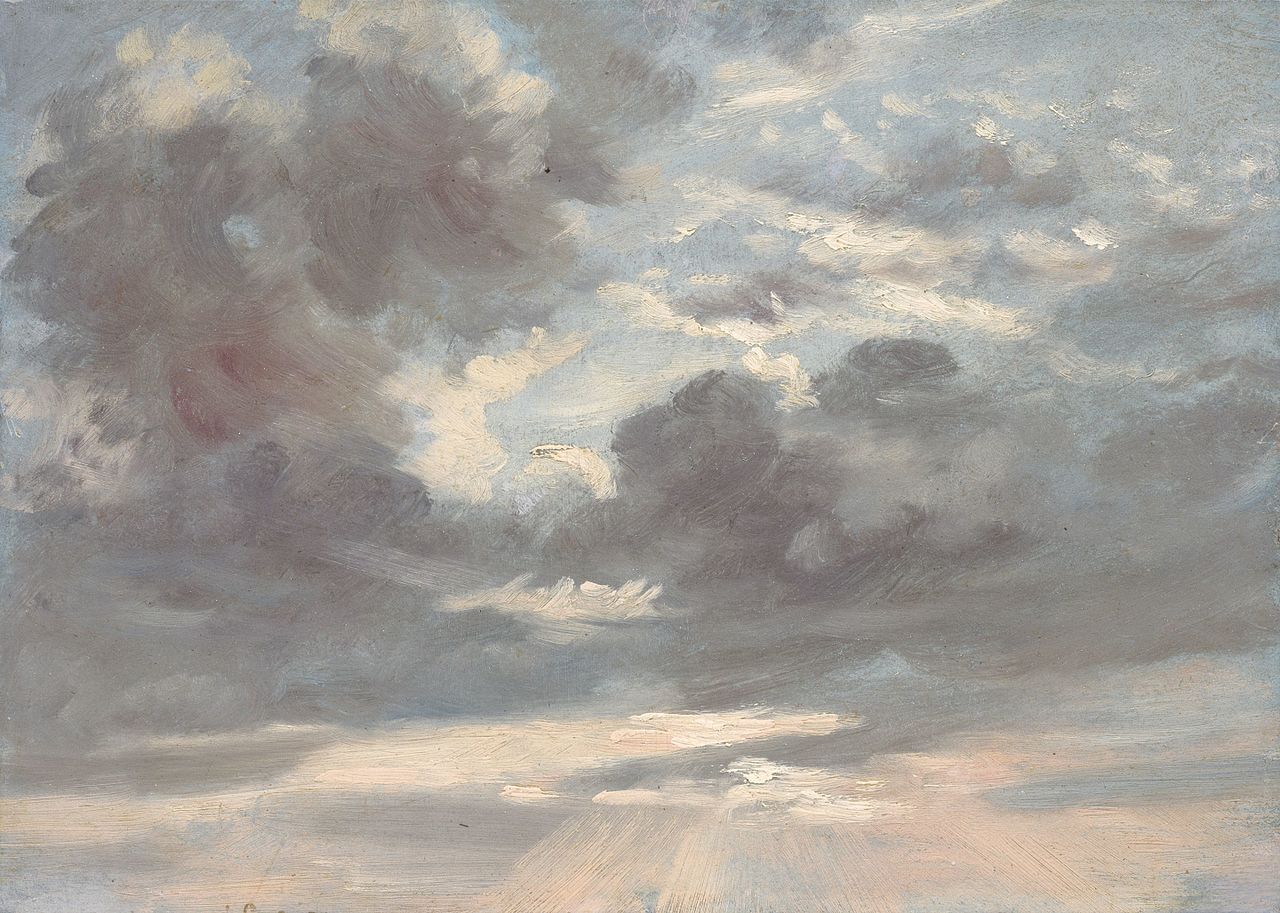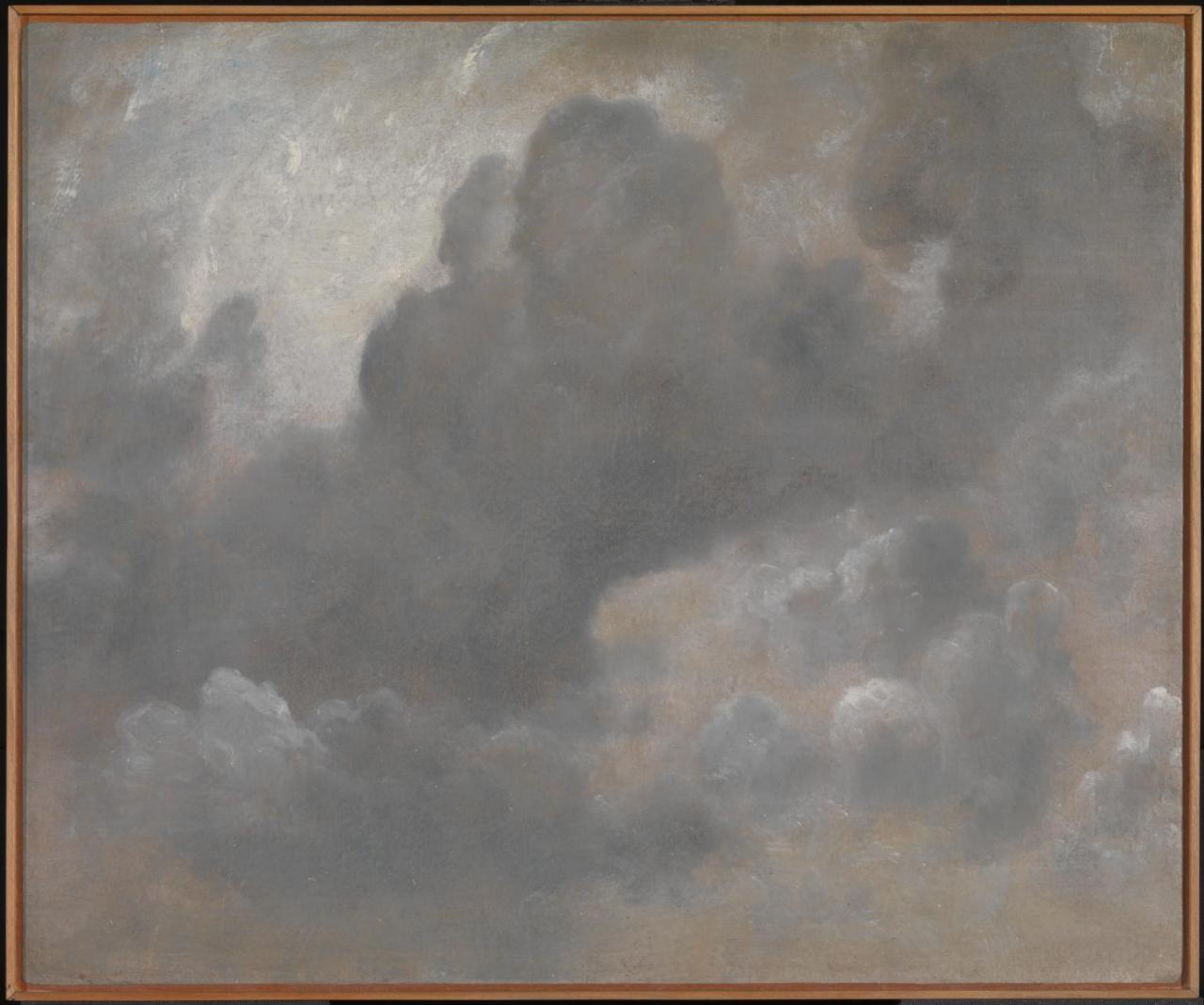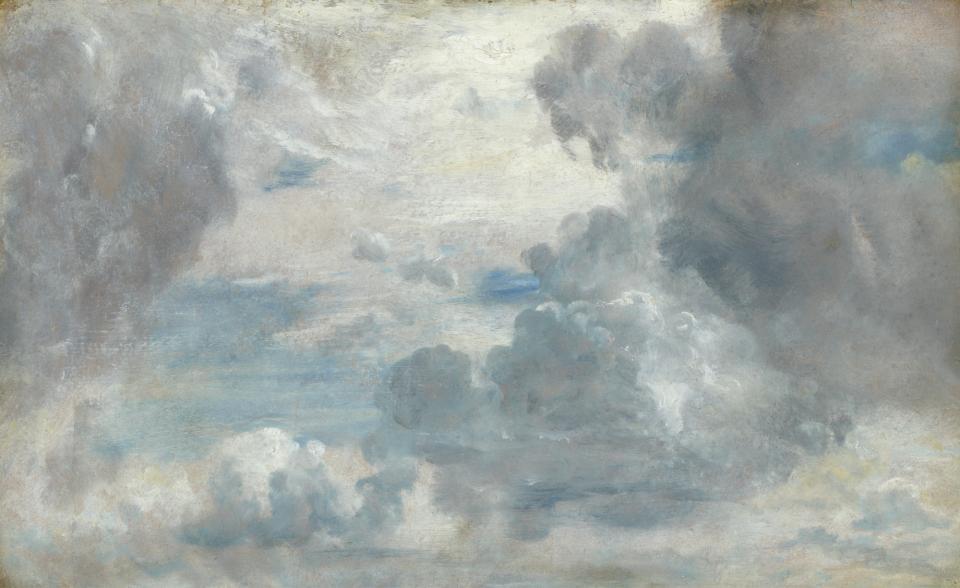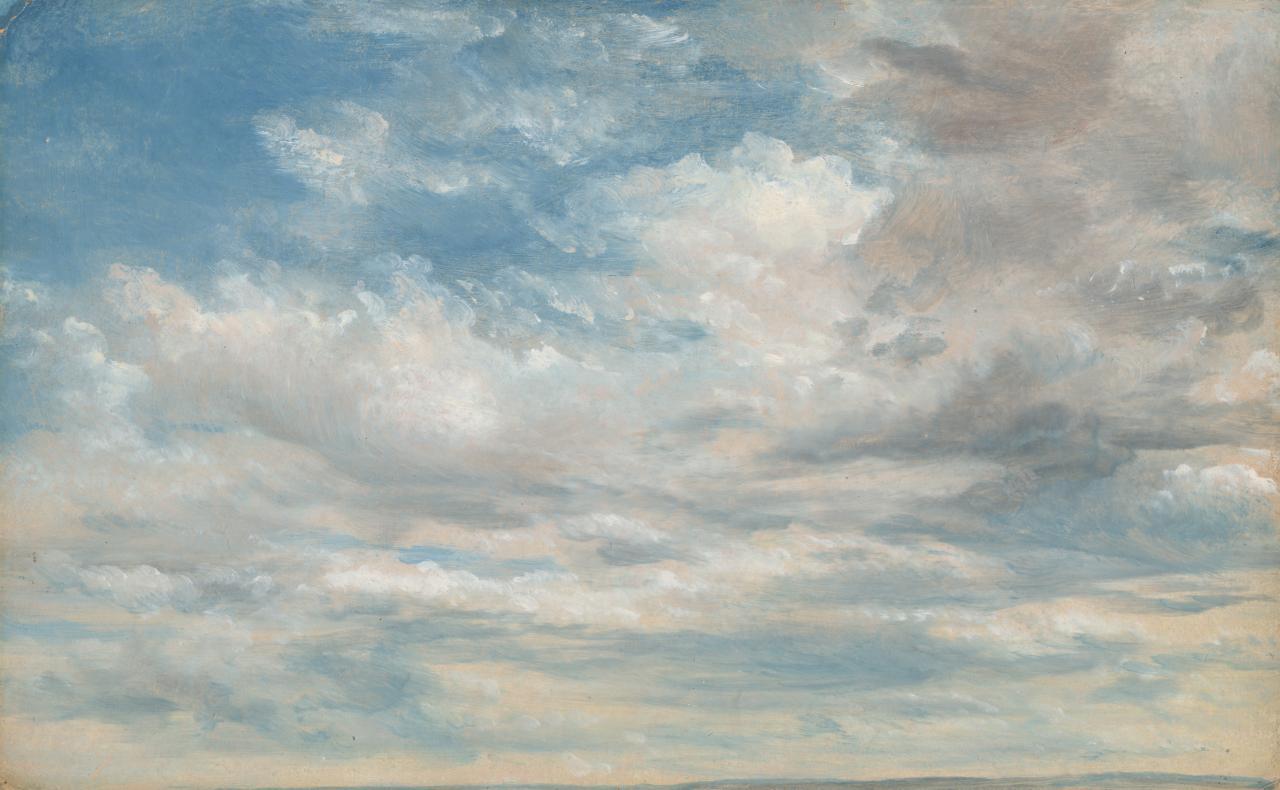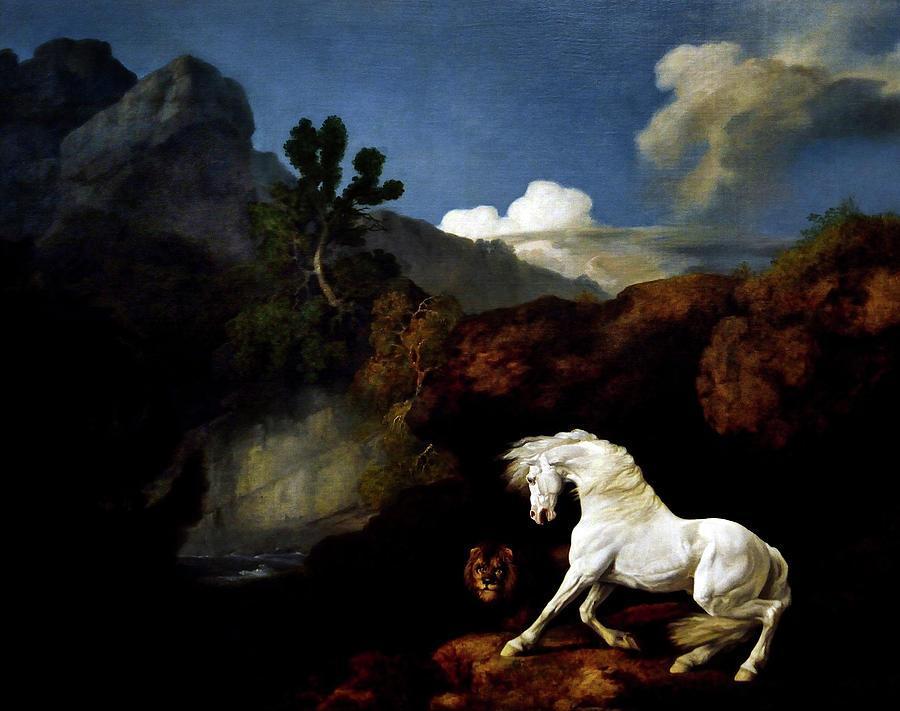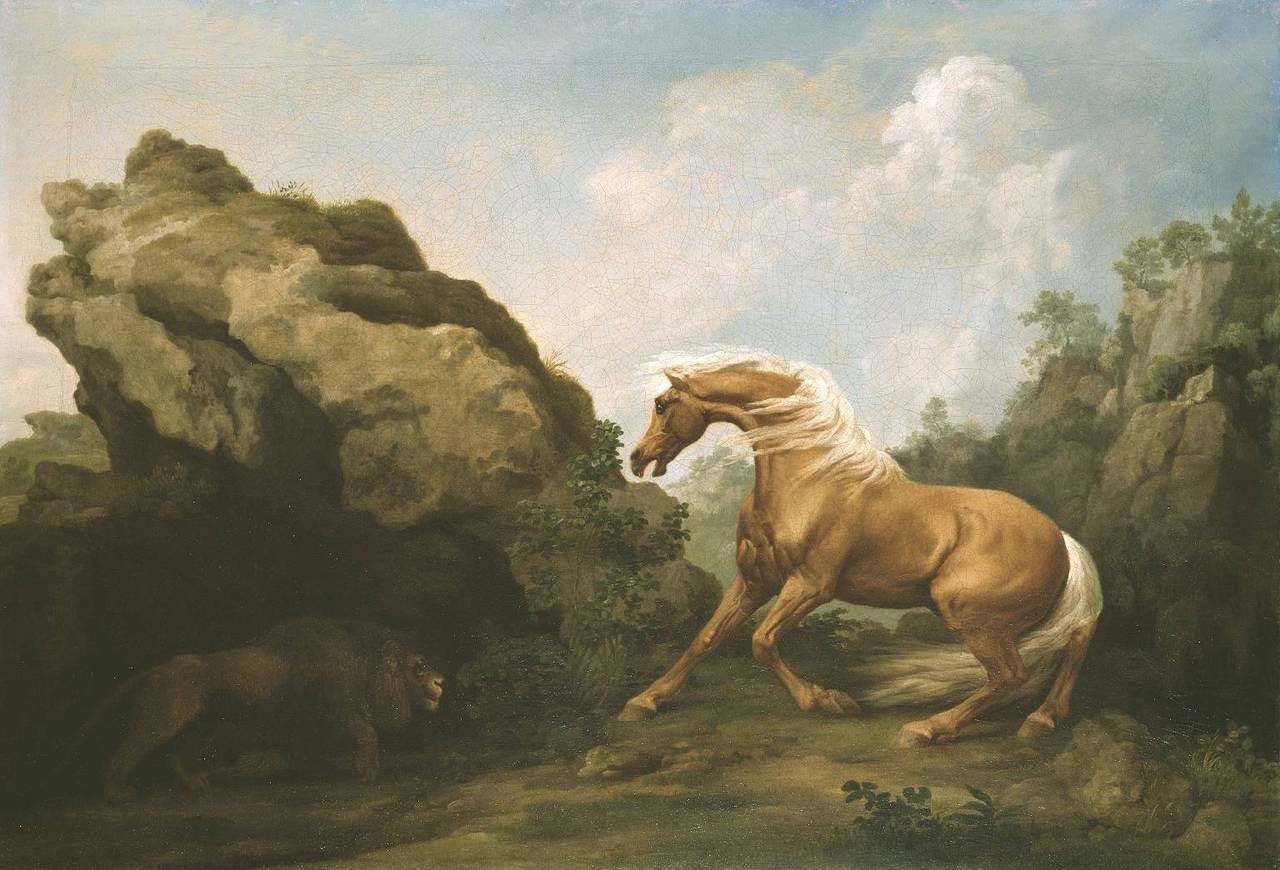Sublime landscapes with romantic ruins are what fills my heart with delight, for nature by itself is plain and mundane. Ruin of a Medieval castle or an abbey overgrown with ivy, lovers sitting in forest glades bathed in silvery moonlight, rivers whose calm flow brings forgetfulness, sight of a lonely figure amidst wild nature; a landscape unadorned with any of these things seizes to excite me. And is there a better age in art for all these qualities than Romanticism?
 John Constable, Sketch for ‘Hadleigh Castle’ c.1828–9, London, Tate Gallery
John Constable, Sketch for ‘Hadleigh Castle’ c.1828–9, London, Tate Gallery
John Constable’s aim in painting landscapes was to capture the nature with honesty, to capture its beauty and simplicity without showing off in an arrogant Turner way. He is not the representative in portraying nature with passion, lyricism or melancholy; you should seek those qualities in paintings of Turner, John Martin or Caspar David Friedrich, but at one point, in 1828, he felt that his life and art were in a state of ruins and he sought in nature a vision of his own soul and he found it in a desolate scene of a Hadleigh Castle in Essex.
The brooding tower is a sinister sight indeed, seen after a stormy night; wrapped in dark thoughts, breathing in the air of decay, its glory days forgotten and only a corpse of stone walls remains, the crows flying by its only friends in centuries of solitude… The sky is a commingled mass of whites and blues, and the marshlands are drowning in darkness. A vague figure of a shepherd with his dog in the left corner, and cows and cliffs painted carelessly. The most peculiar thing about this oil sketch is the way it is painted; almost expressionistic with those thick, careless brushstrokes, heavy, thickly impasto way of applying colour with no constraint. And it’s sublime and sombre mood has since drawn comparisons to Rembrandt’s “The Mill” (1645-48). The scene seems so out of place in Constable’s usual peaceful countryside scenes painted in a very detailed way with fine brushwork, that one can’t help but wonder about this strange change of style and theme.

John Constable, Maria Bicknell, 1816
This peculiarly dark mood of the painting is caused by the events in Constable’s private life. His dear wife Maria, who was of fragile health, fell ill after giving birth to their seventh child in January 1828, and in November the same year she died from consumption. Constable was devastated; he started dressing in black and succumbed to melancholy. The death of his angel, as he called her, changed everything. They married in autumn of 1816, when he was forty years old, after their friendship grew into deep love. But now, after only twelve years of happiness, Constable was a lonely, depressed figure, wrapped in gloomy thoughts, tormented by anxiety and brutal self-questioning of his life and career. Nothing made sense any more, and he wrote in a letter to his brother Golding “hourly do I feel the loss of my departed Angel—God only knows how my children will be brought up…the face of the World is totally changed to me“.
 John Constable, Hadleigh Castle, sketch, 1814
John Constable, Hadleigh Castle, sketch, 1814
As you can see from the rather small pencil sketch, about 8 x 11 cm, Constable had visited the sight way before he decided to fully devote to it and paint it on a large, six foot canvas in oils. It seems to me that the distance between two towers is bigger in the drawing than it is in the paintings. Perhaps the reason why he returned to the subject of the Hadleigh Castle after fourteen years lies in the fact that while he visited it for the first time, in 1814, he rapturously wrote to Maria of its beauty. This is what he wrote, on 3 July 1814: “At Hadleigh there is a ruin of a castle which from its situation is a really fine place – it commands a view of the Kent hills, the Nore and North Foreland & looking many miles to sea.” After she died, he may have revisited their correspondence, and with tears glistening in his eyes remembered the happier times, and he may have seen the castle as a symbol of those times.
I love the sketch, specially the birds flying around the tower and the clouds, and something about it appeals me more than the finished painting. I know what it is; in the drawing there is no figure of a shepherd and the cows; a motif so utterly Constable and so unfitting for the Gothic mood of the sublime. As much as I like the painting, I would have preferred to see it painted as a nocturnal scene, in dark magical blues with large moon shining on the horizon and a distant figure of a horseman, and the moonshine peeking through the old ruin of a tower, but that wouldn’t be Constable any more.
 John Constable, Hadleigh Castle, The Mouth of the Thames–Morning after a Stormy Night, 1828-29
John Constable, Hadleigh Castle, The Mouth of the Thames–Morning after a Stormy Night, 1828-29
Now you can see what an impact personal life and tragedies can have on an artist, and that even a simple landscape is filled with secrets that leads us to the artist’s soul. Constable’s saddest state resulted in what is perhaps the most poetic, the most ‘sublime’ out of all his paintings, but the wild and gloomy sketch version from the Tate Gallery isn’t the only one. He painted another version of the same scene, pretty much the same, which is more in tune with Constable’s typical refined, sleek style; gloom is subtler, brushstrokes are more controlled, and you can see the details more clearly, such as the shepherd and his dog, and the cows, even the sky looks softer and less threatening. So there is a ‘passionate’ version and a ‘tamed’ one. Needless to say which one I prefer.
Tags: 1828, 1829, art, British Art, Death, Essex, Hadleigh Castle, John Constable, Landscape, Medieval castle, Melancholy, Nature, old ruin, painter, Painting, Romantic, Romanticism, sketch, stormy night
 Barbara Jones, Fairground, 1945, colour litograph
Barbara Jones, Fairground, 1945, colour litograph



